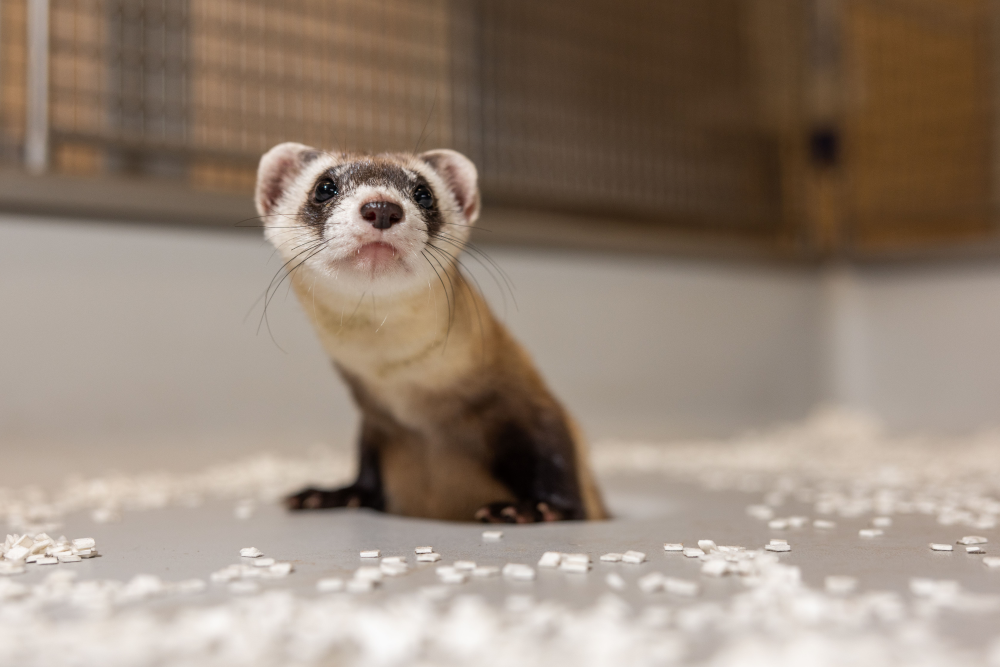For the first time ever, two black-footed ferret kits have been born to a cloned endangered animal. The mother is a ferret named Antonia who made the news when she was cloned from an old tissue sample, becoming one of three black-footed clones alive today.
Antonia and her sister clones, Elizabeth-Ann and Noreen, were created using the frozen cells of a deceased individual called Willa who died in 1988. Her genetic material was preserved thanks to the Frozen Zoo at the San Diego Zoo Wildlife Alliance, and a good thing too as her DNA contains three times the genetic variations found in modern-day black-footed ferrets (Mustela nigripes).
The reason for this genetic bottleneck is that all black-footed ferrets alive today are born from just seven individuals. A dip in genetic diversity puts them at risk of certain diseases, including sylvatic plague and the canine distemper virus. The ultimate goal is that by returning Willa’s genetics to the gene pool, scientists might be able to protect the species’ future by returning the diversity needed for long-term recovery.
It was hoped Elizabeth-Ann might be the first to have kits of her own, but an underdeveloped reproductive system and condition called hydrometra prevented it. Now, Antonia has made history for black-footed ferrets in becoming the endangered species’ first-ever clone to give birth.

Proud mom, Antonia.
And so we welcome to the world two new black-footed ferret kits that have been over 35 years in the making. The very precious babies were born at the Smithsonian National Zoo and Conservation Biology Institute (NZCBI) in Front Royal, Virginia, and the team are understandably delighted.
“The successful breeding and subsequent birth of Antonia’s kits marks a major milestone in endangered species conservation,” said Paul Marinari, senior curator at the Smithsonian’s NZCBI. “The many partners in the Black-footed Ferret Recovery Program continue their innovative and inspirational efforts to save this species and be a model for other conservation programs across the globe.”
To see births among clone animals is a landmark moment for conservation genetic research, but one that can’t be successful on its own. The team behind the babies’ creation is also focusing on habitat conservation, disease management, and ultimately the reintroduction of ferrets into the wild – because what are we gonna do with a load of cloned ferret babies otherwise?
Fortunately, they’ve got quite a team behind them, as the ongoing research is part of a collaboration between the U.S. Fish and Wildlife Service and partners such as the Smithsonian’s NZCBI, Revive & Restore, San Diego Zoo Wildlife Alliance, ViaGen Pets & Equine, and the Association of Zoos and Aquariums.
Go team!
Source Link: Cloned Black-Footed Ferret Gives Birth To Kits In Adorable World-First